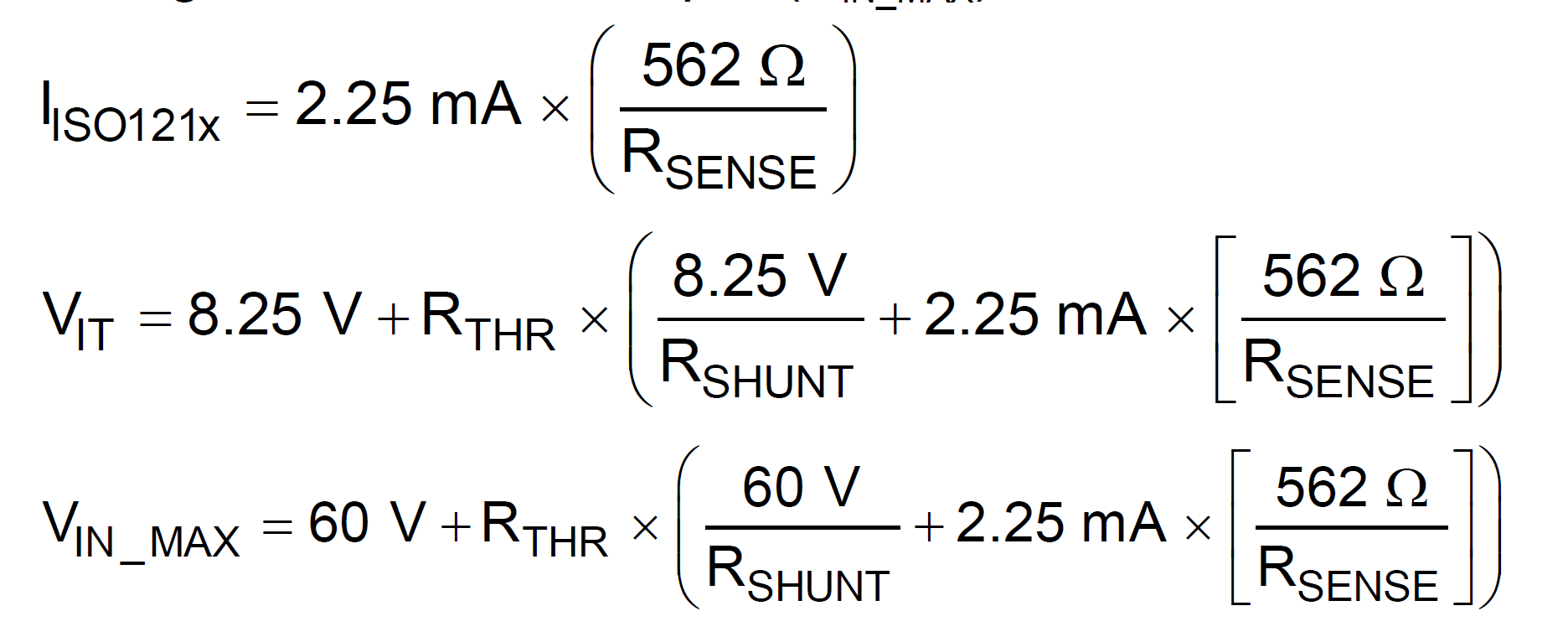Hi
We are using ISO1212 for Isolation purpose for 24V , 48V DC Digital Section and for AC Section of 230V AC.As per the Threshold Calculator and application note
" How to Design Isolated Comparators for ±48V, 110V and 240V DC and AC
Detection TI TechNote."
We want to know how the voltage to IC pin will be less than or maintained less than 60V - as per datasheet Rshunt will take care maintaining voltage across the pin.
Can you give us explanation/ calculation details on this section how different values of Rth and Rshunt will maintain 60V


